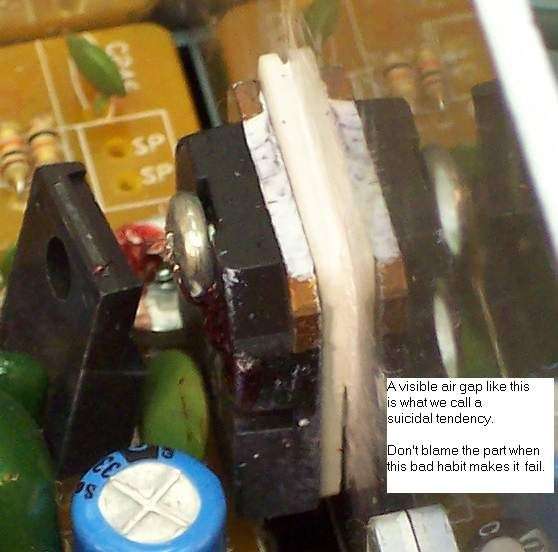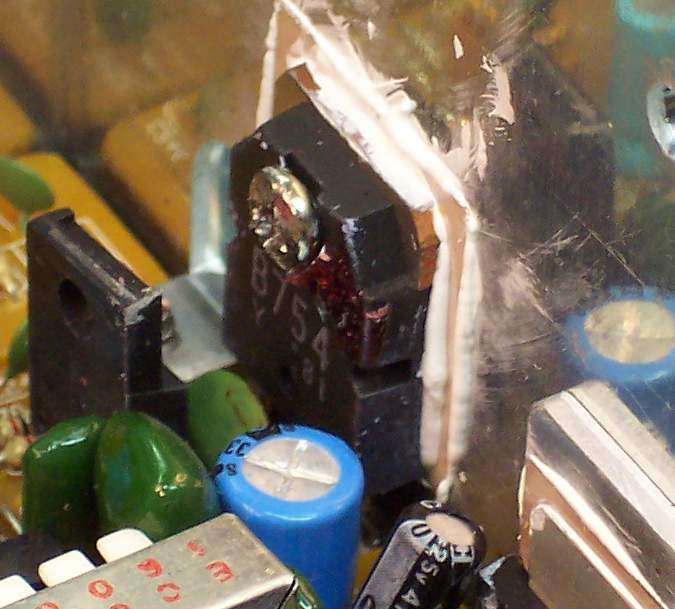Hi Justin. Go ahead and advertise. I'll even vouch for you, for what it's worth.
But DR, if you're trying to satisfy your curiosity, or just learn a thing or two, here's one winner on the Galaxy moblie-radio "Hit Parade". Some failures are seen more often than others.

The big, black plastic power tansistor in the picture serves two purposes. First to modulate your voice audio onto the juice that runs the final and driver transistors. It also controls the carrier-power level as well. Some folks will refer to it as a "regulator", but strictly speaking it's your MODULATOR transistor. The air gap visible in the pic is due to, er, "imperfect" quality-control and assembly standards. The gap should be thinner, in the first place, since they don't seem to get the flat back of the transistor parallel to the white insulating washer. ALL of the insulator's surface, on BOTH sides should have a layer of white heat-conducting compound smeared onto it. This stuff is mixed from silicone dielectric grease, which will carry heat nearly as well as metal. The tiny air gaps you get when two flat surfaces are joined will slow the transfer of heat from this part to the radio's side rail. That rail serves as the heat sink for that part. The air gap will NOT carry heat away from the part. Makes it overheat.
The air gap leads to premature failure of the 2SB754 transistor, often causing it to short inside. This is what gooses the carrier to 20-plus Watts when this happens. Shorted part won't control what passes through it any longer.
If you have a way to test this part, and find it's bad, the driver transistor that feeds into it should also go, even if it checks okay. That's the slightly smaller black one (with the hole in it) just in front of the big modulator transistor.
The white ceramic insulator tends to crack. It's a rigid, brittle material, and the uneven pressure of the transistor (not parallel) will tend to crack it. Can't tell this until you remove the transistor's mount screw, and pull out the insulator.
When this happens, I prefer to use a mica insulator in place of the white ceramic. Just easier for me.
There is actually a tad too much grease under this transistor. You don't need ANY more than enough to make a tiny bead ALL the way around the part's (and the insulator's) edge. This assures you that air gaps have been excluded underneath it. More compound than that is just wasted. Bolting the transistor down BEFORE you solder the three leads helps insure it will lay flat against the side rail. Makes me think the factory solders it BEFORE they bolt it down? Hmmmm. Probably saves them a nickel's worth of labor per radio to do it that way.
To do this job, getting just one each of the 2SB754, driver, insulating washer and heat-sink compound won't be all that cheap. Minimum-order charges and shipping will cost as much as the parts, or more.
On the other hand, if that's not the cause of the trouble, you'll still have a broken radio.
Best source for those parts is
www.westgateparts.com
He's not the only one, by a long shot, but should have it all in one stop.
Don't want to discourage anyone from learning about radios, but if JUST getting it fixed is your main objective, Justin is most likely the cost-effective, not to mention safer choice.
73


